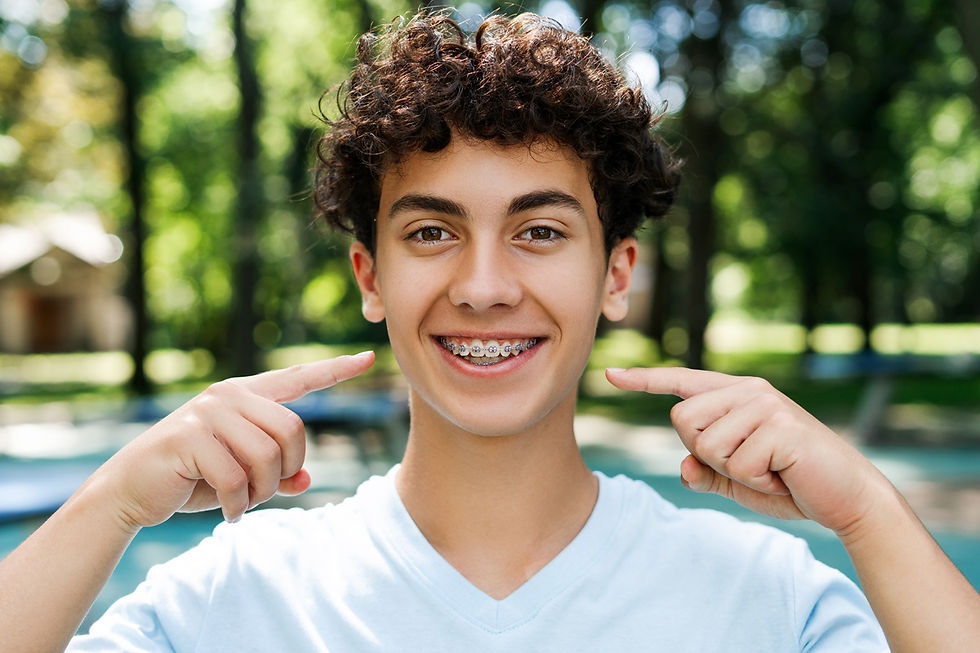Do Orthodontists Prefer Invisalign or Braces?
- primarydental353
- May 30, 2024
- 4 min read

Orthodontic treatment has significantly evolved over the years, with two of the most popular options being traditional braces and Invisalign. Both methods aim to straighten teeth, correct bite issues, and improve overall dental health, but they come with distinct advantages and disadvantages. For those seeking an Orthodontist in Denver, understanding these differences is crucial in making an informed decision.
Understanding Traditional Braces
Traditional braces consist of metal brackets bonded to the teeth, connected by wires and elastics. They exert pressure on the teeth, gradually moving them into the desired position.
Advantages of Traditional Braces
Effectiveness: Traditional braces are highly effective for a wide range of dental issues, including severe misalignments, overcrowding, and complex bite problems.
Control: Orthodontists have precise control over tooth movement, which can be crucial for achieving optimal results.
Durability: Made from sturdy materials, traditional braces are less likely to break compared to some other orthodontic options.
Disadvantages of Traditional Braces
Aesthetics: One of the main drawbacks is their visibility. Metal braces are noticeable, which can affect a person’s confidence and willingness to smile during treatment.
Comfort: Braces can cause discomfort and irritation to the gums and cheeks, especially after adjustments.
Maintenance: They require careful cleaning to avoid plaque buildup and potential tooth decay around the brackets.
The Rise of Invisalign
Invisalign offers a more modern approach to orthodontics. It involves a series of clear, removable aligners custom-made for the patient’s teeth. The aligners are changed approximately every two weeks to gradually shift the teeth into place.
Advantages of Invisalign
Aesthetics: The primary benefit of Invisalign is its near-invisibility. The clear aligners are difficult to detect, making them an attractive option for adults and teens who are conscious about their appearance.
Comfort: Invisalign aligners are made from smooth plastic, reducing the risk of irritation and discomfort often associated with traditional braces.
Convenience: Aligners can be removed for eating, drinking, brushing, and flossing, making it easier to maintain oral hygiene and enjoy meals without restrictions.
Disadvantages of Invisalign
Effectiveness for Complex Cases: Invisalign may not be as effective for severe orthodontic issues, such as large gaps, significant rotations, or major bite corrections.
Discipline Required: Since aligners are removable, patients must be disciplined about wearing them for at least 22 hours a day to ensure effective treatment.
Cost: Invisalign can be more expensive than traditional braces, which may be a consideration for some patients.
Orthodontists' Preferences
When it comes to choosing between Invisalign and braces, orthodontists weigh several factors, including the complexity of the case, patient preferences, and lifestyle considerations. Let’s explore how these factors influence their recommendations.
Case Complexity
For complex dental issues, traditional braces are often the preferred choice. The fixed nature of braces allows for more precise adjustments, making them suitable for severe misalignments and bite problems. An Orthodontist in Denver might recommend braces if the patient’s dental issues require significant correction that Invisalign cannot achieve as effectively.
Patient Lifestyle and Preferences
Invisalign is favored by many patients due to its aesthetic appeal and convenience. Teens and adults who are self-conscious about their appearance during treatment often opt for Invisalign. An Orthodontist in Denver will consider the patient’s lifestyle and willingness to comply with the treatment plan when recommending Invisalign. Patients who prefer a discreet option and are diligent about wearing their aligners may find Invisalign to be a suitable choice.
Age Considerations
Both Invisalign and traditional braces are effective for patients of all ages. However, younger patients, especially children and younger teens, might benefit more from braces due to their fixed nature. Braces eliminate the risk of non-compliance, which can be a concern with removable aligners. Conversely, older teens and adults often prefer Invisalign for its minimal impact on their appearance and daily activities.
Duration of Treatment
Treatment time can vary depending on the severity of the case and the patient’s adherence to the orthodontist’s instructions. In general, traditional braces might work faster for certain complex issues, whereas Invisalign’s duration largely depends on the patient’s commitment to wearing the aligners as prescribed. An Orthodontist in Denver will provide a tailored estimate of treatment duration based on the chosen method and the specific needs of the patient.
Making the Decision
The decision between Invisalign and traditional braces ultimately depends on a thorough consultation with an experienced Orthodontist in Denver. They will evaluate the patient’s dental health, discuss their goals and preferences, and recommend the most suitable treatment option.
Consultation and Personalized Treatment Plan
During the consultation, the orthodontist will take detailed scans, X-rays, and impressions of the patient’s teeth. These diagnostic tools help in creating a personalized treatment plan that addresses the patient’s specific needs. Whether opting for Invisalign or braces, the goal is to achieve a healthy, beautiful smile that enhances overall well-being.
Cost and Insurance Considerations
Cost is an important factor for many patients. Traditional braces generally have a lower upfront cost compared to Invisalign, but the overall expense can vary based on the complexity of the case and the duration of treatment. It’s essential to check with the Orthodontist in Denver about payment plans and insurance coverage to make the treatment more affordable.
Both Invisalign and traditional braces have their unique advantages and limitations. For those seeking an Orthodontist in Denver, the choice between these options should be guided by professional advice tailored to individual dental needs and lifestyle preferences. By understanding the benefits and drawbacks of each method, patients can make an informed decision and embark on a journey towards a healthier, more confident smile.



Comments